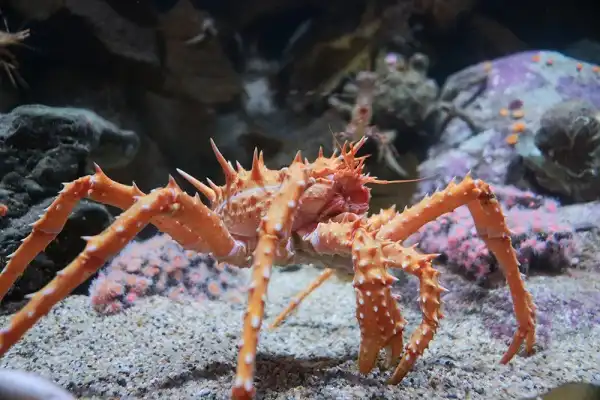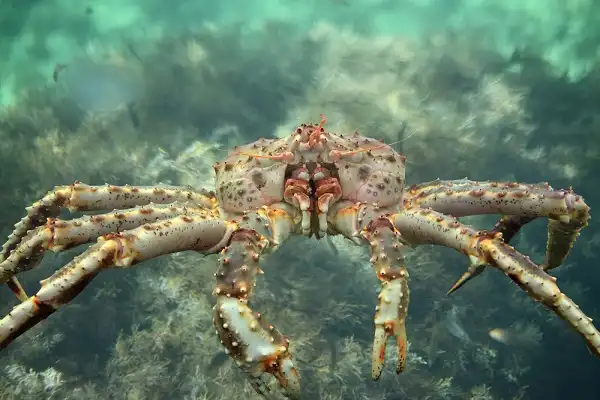The king crab is a uniquely fascinating species of animal. Above all, what sets them apart is their tenacity and will to survive in some of the harshest conditions on Earth. In this blog post, we’ll explore some of the amazing adaptations that allow king crabs to thrive in their environment. So sit back, relax, and enjoy learning about one of nature’s true survival masters!

King Crab Description
The king crab is a crustacean that looks like a giant spider. It has long, spindly legs and two pincers at the front of its body. The crabs are usually red in color, though some can also be orange or yellow. They can grow to be quite large-the largest species of king crab on record weighed nearly 11 pounds!
King Crab Habitat
The king crab lives mainly in northern waters around the world’s coasts. The water temperature must remain below 5°C for them to survive; any warmer and they become lethargic and eventually die. They prefer muddy or sandy bottoms where food is plentiful, as well as areas with strong currents that help them move from place to place.
King Crab Diet
The king crab is a fierce hunter and feeds on a variety of prey. It will eat fish, mollusks, worms, and even other crustaceans. King crabs are also known to scavenge for food when necessary; they have even been observed feeding on dead animals that have sunk to the bottom of the ocean.
King Crab Size
The king crab can reach up to 2 meters in length and weigh as much as 11 pounds. This makes it one of the largest species of crabs in the world. The smallest king crabs measure only a few centimeters in length.

King Crab Lifespan
King crabs have a rather long lifespan, often surviving in the wild for many years. King crabs are known to be quite resilient and hardy creatures, allowing them to thrive in both cold and warm climates. Studies have been conducted on King Crab Lifespans and it has been found that King Crabs can live up to 30 years in the wild. King Crabs are also able to regrow their limbs if they become damaged or broken, giving them further opportunities to extend their life even further. King Crabs are impressive creatures that continue to fascinate us with their adaptability and longevity.
King Crab Behavior
The king crab is a social creature that lives in large groups, often forming clusters of hundreds or even thousands of individuals. They are nocturnal animals and feed mainly at night when the waters are calmest. During the day, the crabs will seek shelter in crevices or burrows in order to avoid predators. King crabs also communicate with each other through chemical signals; they release different hormones depending on their mood, allowing them to coordinate group behavior.
King Crab Speed
King crabs have a surprisingly fast pace of movement, capable of reaching speeds of up to 5 miles per hour. While not as speedy as other aquatic animals such as dolphins or sea turtles, the king crab’s speed is impressive considering its size and weight.

King Crab Hunting
King crabs are incredibly effective hunters. They use their powerful pincers to catch prey and then inject them with poison, quickly killing the animal. It is believed that king crabs can even detect potential food sources from a distance, using specialized sensors on their bodies in order to locate prey buried under sand or mud.
King Crab Adaptations
The king crab has an impressive array of adaptations that allow it to survive in its harsh environment. Its hard shell helps protect it from predators and cold water, while its long legs give it greater maneuverability underwater. The crabs also have powerful claws that can crush prey and keep them safe from attackers. Additionally, they are able to change their color when threatened, making them harder to spot predators. Finally, they can rest on the ocean floor during periods of low tide or bad weather and conserve energy until better conditions return.

Conclusion
In conclusion, the king crab is an impressive creature that has been able to successfully adapt to its environment over millions of years. Its unique size and speed, as well as its ability to hunt efficiently, make it one of nature’s most intriguing species. Next time you come across a king crab, take a moment to appreciate these amazing animals!
Frequently Asked Question

